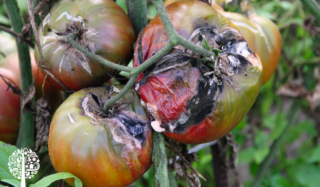This article will make you question everything you thought you knew about water. The following technique revolutionizes the safety of food and dry flower products sold for human consumption but has been used for decades in the food industry.
One of the biggest issues growers face is keeping their beautiful produce from spoiling and becoming ravaged by microbes. This ‘takeover’ happens in the form of fungal or bacterial growth or increased enzyme activity, causing the breakdown of the structures. The appearance, taste, and smell are affected by this spoilage; some biomass and essential compounds are also lost. These can be nutritionally and medically significant compounds, depending on the plant. But, most importantly, the safety of the product for consumption is compromised.

What Causes Spoilage?
The water present causes this spoilage and reduced shelf life in the plant; the higher the water content, the increased risk of microbial attack. But why do some foods take longer to begin this process?
When water is in an equilibrium state, it moves from a liquid/aqueous state to a gasses/vapor state. Water is also classed as a solvent, and it will happily hold salts and sugars along with many other constituents known as solutes. The addition of solutes to water alters the equilibrium state and its behavior. Not only that, but its temperature also has an effect. Food has many different solutes at differing concentrations. When the water is removed, these concentrations increase and help boost the food’s shelf life.
Various Food Preservation Techniques
Salts and syrups have been used for many years to preserve food. Radiation is another methodology that has been employed, killing anything present on the surface of the produce. However, these methods can be detrimental to some volatile compounds, reducing their nutritional and beneficial properties. Ozone and steam are also food preservation techniques. However, the damage caused to delicate fruit is more problematic than the solution it creates.
Understanding the chemistry behind why food spoils is essential. It allows us to develop a more tailored preservation methodology rather than just adding substances or using treatments that will have anti-microbial effects.
What Is Water Activity?
Water activity is a concept that has been around for over 50 years and has helped with food safety, product design, and shelf-life guarantees. Lowering the water activity of a food substance helps prevent the growth of microbes; it is not classed as a kill step, as cells are viable in powdered milk but never grow.

The strict definition of water activity (aw) is the partial vapor pressure of water in a solution (p) divided by the standard state partial vapor pressure of water (p*).
aw = p/p*
But what does this mean in simple terms?
It is the thermodynamic activity of the water, also known as the energy the water has as a solvent (p) and the relative humidity of the surrounding air (p*). As the temperature increases, so does the aw because it has greater energy. The more energy the water has, the better its capacity to support life. The relative humidity of the air surrounding that water also plays an important role.
Distilled water has an aw of 1, giving it the greatest capacity to support life. On the other hand, dried fruit has an aw of 0.6, reducing the chance of microbial colonization and spoilage. If this dried fruit is exposed to dry air with an aw of 0.5, the water will migrate from the fruit into the air, preserving it further. However, with an aw of 0.8, humidity results in the fruit absorbing the humid air and spoiling faster—the lower the aw of a substance, the less chance of microbial growth due to desiccation.
How To Measure Water
There are a couple of ways to measure water: a resistive electrolytic hygrometer, a capacitance hygrometer, or a dew point hygrometer. The first of the above methods follows the principle of resistance. There are electrolytes in the glass rods of the meter that change resistance directly proportional to the relative humidity. The second method involves water being absorbed into a membrane, increasing its ability to hold a charge, which we can then measure. The fastest and most accurate method is the dew point method, which involves cooling a mirror until the dew point and measuring this with an optical sensor.

So, what is the best aw when curing and preventing mould growth?
Remember, it is not just about the aw of the product you are preserving; it is also the relative humidity of the surrounding air. Using airtight containers and desiccating crystal sachets are perfect ways to gently aid the migration of the water from the cells. An aw of 0.6 is ideal when drying fruit and herbs before placing them into the seal storage vessel, where you can control the humidity. Below 0.6, no microbes can proliferate.
Do not rush the curing process if you want to preserve the flavors of your produce. At the same time, insufficient drying can result in loss through decomposition of the biomass. Although it may seem complicated, using water activity to help prolong shelf life and prevent mould is something all serious growers should try.
References
-
Rahman, M.S. and Labuza, T.P., 2007. Water activity and food preservation. In Handbook of food preservation (pp. 465-494). CRC Press.
-
Mathlouthi, M., 2001. Water content, water activity, water structure and the stability of foodstuffs. Food control, 12(7), pp.409-417.
-
Troller, J., 2012. Water activity and food. Elsevier.
-
Barbosa-Cánovas, G.V., Fontana Jr, A.J., Schmidt, S.J. and Labuza, T.P. eds., 2020. Water activity in foods: fundamentals and applications. John Wiley & Sons.